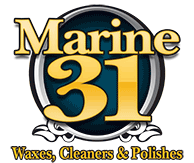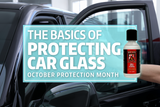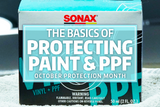How to Choose the Right Pad Polisher
Choosing the right pad polisher isn’t just about grabbing the first one that pops up in a search. The wrong size or type can waste time, wear out your paint, or just deliver mediocre results. Whether you’re detailing professionally or just want your car looking its best, here’s what you need to know to get it right.
1. Pad Sizes: Bigger Isn’t Always Better
Pads typically range from 3" to 7". Each size has its place:
- 3"–4" Pads
- Good for tight spots, intricate areas like bumpers, mirrors, and pillars. Pair with compact polishers. - 5"–6" Pads
- The most common for general use. Ideal for most car panels and a balance of coverage and control. - 6.5"–7" Pads
- Better for large, flat areas like hoods and roofs. They cover more ground but require more power and control.
Tip: Match your pad size to the backing plate size. A 5" backing plate should use a 5.5"–6" pad. Too big or too small can lead to poor performance or pad damage.
2. Backing Plates: The Connection Point
Backing plates come in several sizes (most often 3", 5", and 6"), and they need to match your pad and polisher size:
- 3" Backing Plate → Use with 3"–4" pads
- 5" Backing Plate → Use with 5.5"–6" pads
- 6" Backing Plate → Use with 6.5"–7" pads
They’re often hook-and-loop (Velcro-style) to easily swap pads. A flexible or "contour" backing plate helps with curves and uneven surfaces.
3. Pad Styles: Foam, Microfiber, Wool
Different pads do different jobs:
- Foam Pads
Most common. Range from cutting (firm) to polishing (medium) to finishing (soft). Brands usually color-code them. - Microfiber Pads
More aggressive. Great for paint correction and removing deeper scratches. - Wool Pads
Even more aggressive. Mostly used with rotary polishers. Faster cutting, but more risk of swirl marks or heat buildup.
Pro tip: Always finish with a polishing pad after using microfiber or wool to refine the finish.
4. Types of Polishers: Know Your Tool
- Rotary Polishers (direct drive)
Spins in a fixed circular motion. Strong cutting power, but more heat and risk. Used by pros for heavy correction.
Example:, Flex PE 14-2 150, FLEX XFE 7-12 Mini Polisher - Dual Action (DA) Polishers (random orbital)
Spins and oscillates. Safer for beginners, less likely to burn paint. Ideal for light to moderate correction and finishing.
Example: Griot’s Garage G9 - Forced Rotation DA Polishers
Hybrid of rotary and DA. More correction than a standard DA, but safer than rotary.
Example: Flex XC3401, Rupes Mille
5. Popular Brands (Pads + Polishers)
Pads:
- Lake Country – Widely trusted, great foam and microfiber options
- Buff and Shine – Durable, pro-level
- Rupes – Premium pads, engineered for Rupes machines
Polishers:
- Rupes – High-end DAs, smooth and well-balanced
- Flex – Powerful forced rotation machines
- Griot’s Garage – Great bang for the buck
Pick your pad polisher based on what you actually need. Doing full paint correction on a truck? You’ll want a forced rotation or rotary with a mix of pad sizes. Just doing maintenance polishing on a daily driver? A 5" DA with foam pads is plenty. Match your backing plate and pad sizes, know your polisher’s style, and don’t cheap out on pads—they make the difference between “okay” and showroom.
Explore Popular Articles
-
New Video Alert: How To Clean Car Windows Like A Pro—Get Streak-Free Glass, Guaranteed!
8th Oct 2025 @ 9:20 AMHello again, detailing warriors and car care enthusiasts! You've spent hours perfecting your paint,
-
Protect Your Ride: Autogeek’s Guide to Automotive Glass Care Protection
8th Oct 2025 @ 9:19 AMYour car's windows and windshield are critical to safe driving and the overall appearance of your ve
-
Protect Your Ride: Car Paint Protection and PPF
1st Oct 2025 @ 12:51 PMYour car is more than just a mode of transportation—it's an investment and a source of pride. Keepin



